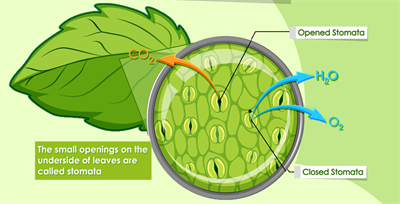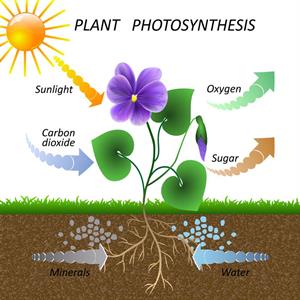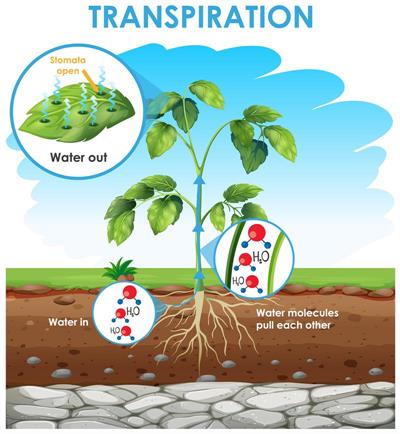
PUMPA - SMART LEARNING
எங்கள் ஆசிரியர்களுடன் 1-ஆன்-1 ஆலோசனை நேரத்தைப் பெறுங்கள். டாப்பர் ஆவதற்கு நாங்கள் பயிற்சி அளிப்போம்
Book Free DemoOxygen is consumed in the process of respiration by all the living things on earth. Human beings breathe through the nose and carry out the respiration process with the help of the lungs. Plants are also living things on earth. But do they breathe? If so, have you ever wondered how they respire?
Respiration in plants:
Like all the other living things, plants also require energy for their growth and hence they respire. Plants intake oxygen and give out carbon–di–oxide during their respiration. This exchange of gases with the atmosphere occurs in plants with the help of stomata.
Stomata are the tiny natural holes present on the leaves of a plant.

Stomata on leaves
Photosynthesis:
Plants make food with the help of carbon-di-oxide in the process of photosynthesis.

Photosynthesis
In photosynthesis, plants produce food by the reaction of carbon-di-oxide from the air and water from the soil in the presence of sunlight. The plants also use a green pigment called chlorophyll, present on the leaves to absorb sunlight during photosynthesis.
The given formula can easily explain the process of photosynthesis,
The roots under the soil absorb water and carry it through the stem to the other parts of the plant.
In plants, transpiration is the process where water is lost from the plants. Water is lost as water vapour in the form of moisture. Water is lost from the stomata that are present in the leaves.

Transpiration process
Plants produce more amount of oxygen in photosynthesis compared to their consumption of oxygen during the respiration.
To study more about photosynthesis, Click here.